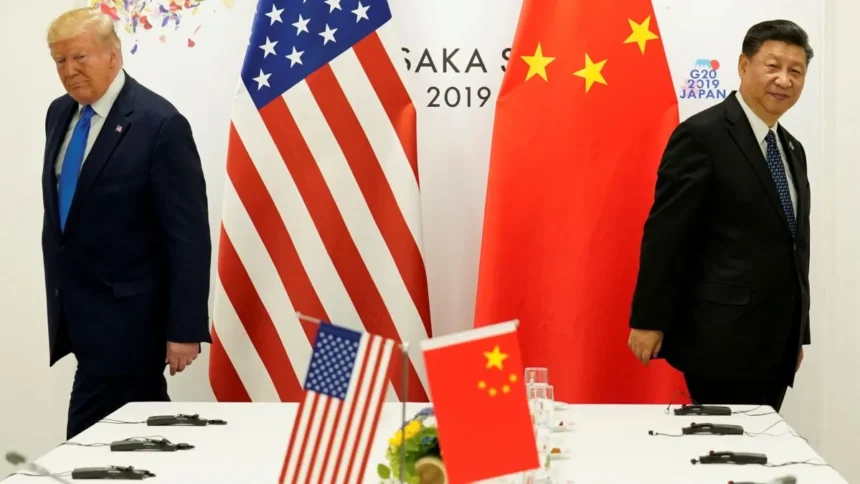The trade war between the United States and China has been one of the most defining economic conflicts of recent times. Under the Trump administration, the U.S. imposed several tariffs on Chinese imports, citing unfair trade practices and national security concerns. In response, China has chosen a strategic legal route by filing a complaint at the World Trade Organization (WTO). This blog explores the legal, economic, and geopolitical implications of China’s lawsuit, analyzing whether the WTO can effectively address such disputes and what this means for global trade.
Background of the U.S.-China Trade War
The trade war began in 2018 when the Trump administration levied tariffs on Chinese goods, accusing Beijing of intellectual property theft, forced technology transfers, and trade imbalances. China retaliated with its own tariffs, leading to escalating tensions.
- Key U.S. Actions:
- Imposition of tariffs on hundreds of billions of dollars worth of Chinese imports.
- Restrictions on Chinese technology firms like Huawei.
- Accusations of China manipulating its currency and engaging in unfair trade practices.
- China’s Response:
- Retaliatory tariffs on American goods.
- Strengthening domestic manufacturing and technology sectors.
- Seeking diplomatic resolutions through international institutions like the WTO.
China’s Lawsuit at the WTO
Instead of engaging in direct economic retaliation, China has filed a case against the U.S. at the WTO. This legal move aims to showcase China as a defender of global trade norms while portraying the U.S. as violating international trade agreements.
- Legal Grounds of China’s Complaint:
- The U.S. tariffs violate WTO rules on non-discrimination and fair trade practices.
- The measures imposed by the U.S. undermine the principles of the General Agreement on Tariffs and Trade (GATT).
- The U.S. actions disrupt global supply chains and create economic instability.
The WTO’s Capacity to Resolve the Dispute
The WTO has traditionally been the global arbiter of trade disputes, but its effectiveness has weakened in recent years due to structural challenges.
- Lack of a Functional Appellate Body:
- The Trump administration blocked the appointment of judges to the WTO’s appellate body, rendering it non-functional.
- Without appellate judges, trade disputes remain unresolved, as losing parties can appeal indefinitely, leading to a deadlock.
- China’s Strategic Move:
- Despite the WTO’s weakened capacity, China’s lawsuit is a diplomatic maneuver to gain global support.
- By filing the case, China positions itself as a nation that upholds international law, contrasting with the U.S.’s unilateral actions.
Geopolitical and Economic Implications
The lawsuit has broader consequences beyond the trade dispute itself. It reflects the larger struggle between the U.S. and China for global economic dominance.
- China’s Attempt to Garner International Support:
- By taking the legal route, China aims to rally other nations against the U.S.’s trade policies.
- Countries reliant on global trade, like Singapore and Germany, might align with China’s position.
- Impact on Global Trade Rules:
- The case could push for WTO reforms to prevent future deadlocks in trade disputes.
- It raises questions about the relevance of multilateral institutions in resolving major economic conflicts.
- Effects on Businesses and Consumers:
- Prolonged trade tensions may lead to supply chain disruptions and higher costs for businesses.
- Consumers could face price increases on goods affected by tariffs.
Potential Outcomes of the WTO Case
Given the current state of the WTO, several scenarios could unfold:
- The Case Remains in Legal Limbo:
- If the WTO’s appellate body remains non-functional, the case may not reach a conclusion.
- This would highlight the need for urgent WTO reforms.
- China Wins the Case but Faces U.S. Non-Compliance:
- Even if the WTO rules in China’s favor, the U.S. might ignore the ruling, as it has done in past disputes.
- This would weaken global trust in the WTO’s enforcement capabilities.
- A Diplomatic Resolution is Reached:
- The lawsuit could serve as a pressure tactic, leading to renewed negotiations between China and the U.S.
- A new trade agreement might be reached, easing tensions.
China’s decision to file a WTO lawsuit against Trump’s trade tariffs is a calculated move in the ongoing trade war. While the WTO’s ability to resolve the dispute remains uncertain, the case highlights the broader geopolitical struggle for economic leadership. If the WTO fails to address such disputes effectively, it risks becoming irrelevant in the face of rising unilateral trade actions. As global trade faces unprecedented challenges, this lawsuit may shape the future of international economic governance.







